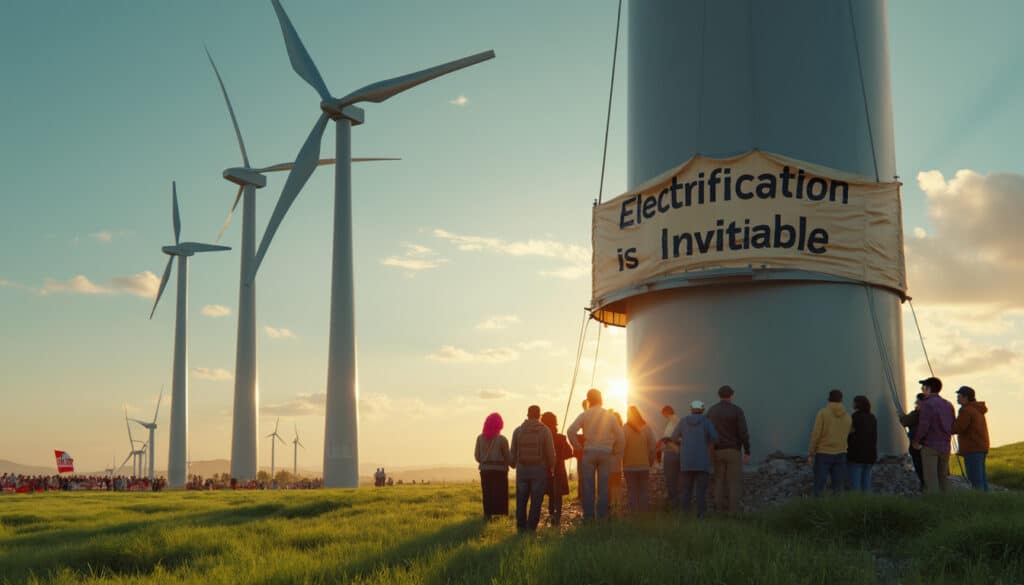The potential of wind energy
With the rise of renewable energies, wind energy emerges as a major solution to reduce carbon footprint. Thanks to ongoing technological advances, modern wind turbines have become more efficient, capturing more wind to generate more electricity.
Onshore wind and offshore wind provide varied solutions for different environments. Coastal areas, often exposed to stronger winds, are particularly suitable for offshore wind farms, which benefit from optimal wind conditions.
The economic benefits of wind energy are numerous. The creation of wind farms generates local jobs, from design to maintenance of the facilities. Moreover, the use of renewable sources reduces dependence on fossil fuels, thus stabilizing energy prices in the long term.
The development of wind energy is also supported by favorable government policies. Many countries offer subsidies and tax incentives to encourage investments in this sector. These measures enable an accelerated growth of wind installations and make this technology more competitive.
Continuous technological innovations play a crucial role in enhancing the efficiency of turbines. For example:
- Increasing the blade size to capture more wind.
- Using lighter and more durable materials.
- Integrating energy storage systems to manage production fluctuations.
In cooperation with sustainable mobility and energy storage solutions, wind energy can significantly contribute to a cleaner energy transition. Collaboration among various sectors can maximize synergies and create more sustainable and environmentally friendly settings.
Environmental impact
The potential of wind energy is immense and offers a viable solution to meet global energy needs while respecting the environment. Wind turbines harness the force of the wind to produce clean and renewable electricity. This technology has evolved significantly over the years, allowing for increasingly efficient energy production.
Modern wind turbines can generate considerable amounts of electricity, even with moderate winds. Technological advances, such as larger rotors and high-efficiency turbines, have improved the output of wind installations. Moreover, sophisticated software allows for better forecasting of wind conditions, thus optimizing energy production.
In terms of environmental impact, wind energy presents notable advantages. Wind turbines emit neither greenhouse gases nor air pollutants during their operation. Additionally, they require little water, which is crucial in contexts where water is a limited resource.
However, it is essential to consider the challenges associated with the installation and operation of wind farms. For example, the impacts on wildlife and natural landscapes must be carefully assessed. To minimize these effects, rigorous environmental studies are necessary before the construction of wind farms.
Here are some key advantages of wind energy:
- Clean and renewable energy production
- Reduction of carbon emissions
- Reduced dependence on fossil fuels
- Potential for job creation in the renewable energy sector
With a growing demand for sustainable energy solutions, wind energy plays a crucial role in the transition to a cleaner future. Technological innovations will continue to enhance its efficiency, making this energy source essential for achieving carbon neutrality goals in the coming years.
Technological development
Wind energy represents a promising alternative to fossil fuels. By harnessing the force of the wind, it allows for the production of clean and renewable electricity. Wind farms are multiplying around the world, significantly contributing to reducing carbon emissions.
Current wind turbines offer impressive performance. Thanks to advanced technologies, it is now possible to capture wind energy more effectively, even at low speeds. Technological innovations aim to increase the profitability and sustainability of installations. Among these:
- Using lighter and stronger materials.
- Developing smart control systems to optimize electricity production.
- Designing offshore wind turbines capable of capturing stronger and more consistent winds.
The technological challenges also include reducing the noise and visual impact of wind turbines. Research is underway to integrate these installations into urban and rural environments without disturbing residents and local wildlife.
By combining technological advances and effective implementation strategies, wind energy can become a central pillar of the energy transition. The storage of produced energy and the smart management of electrical grids are essential development areas to maximize the positive impact of wind turbines on our environment.
“`
Articles similaires
Thank you!
We will contact you soon.














